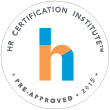
All about that buzz: 7 lessons from Buzzfeed on making benefits messages go viral
When people want a recommendation about a new wine bar to try or vacation hotel, they’re likely to turn to a friend, the Internet, or both.
The challenge for benefits managers, though, is that most employees also search for and share health information that way: 90% of Americans age 18 to 24 trust medical information shared via social media, and one-third of U.S. consumers across all age groups use YouTube, Facebook and Twitter to find and share medical information. More than half (60%) turned to family or friends for information about a serious health condition.
Although employers have employees’ best interests at heart, they often have to overcome an element of distrust when communicating with workers about health and wellness. One way to do that is to leverage employees’ trust in each other by encouraging them to share health and wellness information among themselves.
So, how do you create content that is highly shareable? Speaking at last month’s 2015 SXSW Interactive Conference, Buzzfeed publisher Dao Nguyen gave an inside look at what makes Buzzfeed content so shareable. The trick? Create content that falls into one of seven categories:
Content is timely.
Breaking news and deadlines share well for several reasons: They create a sense of urgency and exclusivity—everyone likes being the “first to know.” One obvious application for employers is enrollment deadlines, but how about offering time-sensitive rewards—i.e., the first five people to sign up for a biometric screening, or who attend a health fair during the first 30 minutes—get a prize. Chances are more will participate and share the “exclusive” knowledge to their friends, too.
Content is identity.
There’s a reason stories like "27 signs you were raised by Asian parents" share well—it’s highly targeted and specific to a group of people that will read it, identify with it, enjoy it and ultimately share it. This concept plays nicely with the idea of targeted communications. We often segment employees according to data for health plan participation, medical claims, 401(k) participation and other factors relating to their corporate identities.
Employers can break out of the box and create communications that dial in on employees’ personal identity—content for new parents, for example. A benefits website is the perfect place to house this content.
Content is relatable.
Nguyen shared a video to illustrate this principle, called "If We Lived In A World Where Women Catcalled Men.” The clip had the room in stitches, and as soon as the session was over, I emailed the link to several friends because the content was so spot-on to my personal experience.
You might be thinking, “Buzzfeed can take any subject and turn it into cool content.” Guess what? Employers can, too! It’s a simple exercise of approaching content from the employee perspective.
That’s how explaining Family and Medical Leave can evolve from this: “You can take a medical leave of absence for up to 12 weeks if you meet FMLA requirements.”
To this: “We know being sick or taking care of a sick loved one can be scary. Here are the top three things you should know about your pay and benefits while you’re on FMLA leave. Rest assured, your job will be waiting for you when you’re ready to come back.”
Content sparks conversation.
This is where the proverbial water cooler works in your favor. For example, “the dress”—is it white and gold, or black and blue?
According to Nguyen, people share content they want and need to talk about. The challenge for employers is to give workers something to talk about. This can be done via tone—try humor or fear—or by using unexpected communication channels to create an element of surprise, like sidewalk chalk art or a large-scale installation.
Content is emotional, aspirational and global.
Nguyen’s last three tips fit nicely into one category for benefits communication, because the benefits employers provide are fundamentally emotional, aspirational and global. When someone needs care, it’s emotional. When someone wants to lose weight or save more money, it’s aspirational. And these desires can apply to anyone, anywhere. When employers view communication strategies through these lenses, the pieces will easily fall into place.
Benefits communication doesn’t have to be dry and boring. They can be highly personalized, relatable, relevant, aspirational and fun. Employers looking to jazz up their communication world can ask: “What would Buzzfeed do?”
Looking for more ways to dial up your communication? We’ve added a bonus encore session to our Benefits Communication Master Class! Join us Thursday,  June 4, for “Creating results: Three steps to success with your benefits communication.” The session is approved for 1 (HR General) recertification credit hour toward a PHR, SPHR or GPHR recertification through the HR Certification Institute.
June 4, for “Creating results: Three steps to success with your benefits communication.” The session is approved for 1 (HR General) recertification credit hour toward a PHR, SPHR or GPHR recertification through the HR Certification Institute.
Work with Us
We partner with organizations that value their people first. Let’s talk.
